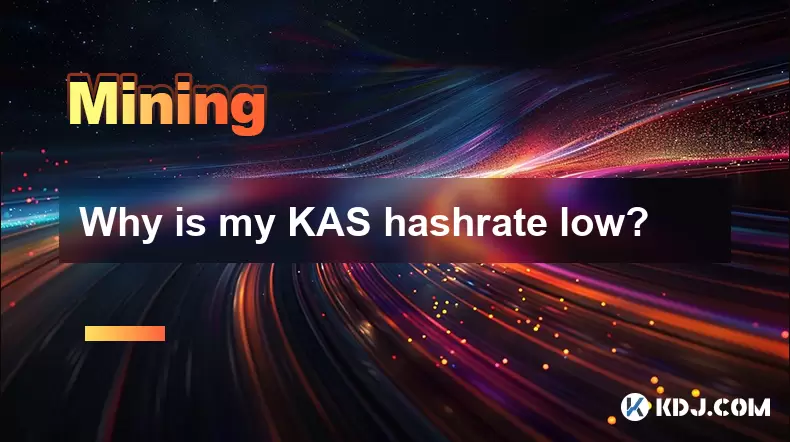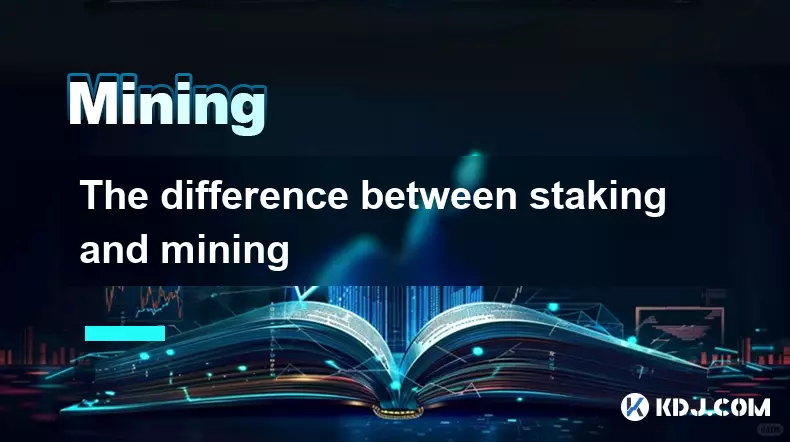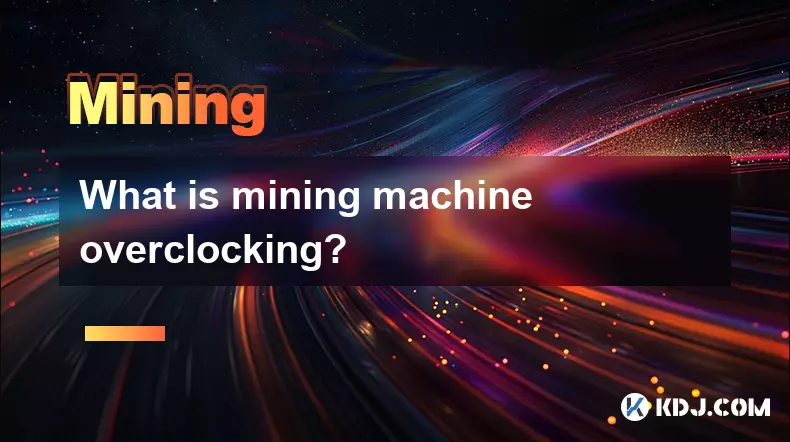-
 bitcoin
bitcoin $122659.385674 USD
0.52% -
 ethereum
ethereum $4484.113342 USD
-0.09% -
 bnb
bnb $1304.229256 USD
-0.85% -
 tether
tether $1.000204 USD
-0.03% -
 xrp
xrp $2.860636 USD
-0.51% -
 solana
solana $227.288799 USD
2.36% -
 usd-coin
usd-coin $0.999805 USD
0.01% -
 dogecoin
dogecoin $0.252837 USD
1.18% -
 tron
tron $0.341149 USD
1.12% -
 cardano
cardano $0.830507 USD
0.33% -
 hyperliquid
hyperliquid $45.792319 USD
0.04% -
 chainlink
chainlink $22.422164 USD
1.55% -
 ethena-usde
ethena-usde $1.000283 USD
0.01% -
 sui
sui $3.511389 USD
0.83% -
 stellar
stellar $0.385276 USD
-0.44%
Why is my KAS hashrate low?
A low KASPA hashrate can stem from outdated drivers, suboptimal mining software settings, thermal throttling, or inadequate hardware for the kHeavyHash algorithm.
Jul 26, 2025 at 11:42 am

Understanding KASPA Hashrate Fundamentals
The KASPA hashrate refers to the total computational power being used to mine and process transactions on the KASPA blockchain. It is measured in hashes per second (H/s), with common units including KH/s, MH/s, and GH/s. A low hashrate on your mining rig means your hardware is performing fewer calculations per second than expected, which directly impacts your mining efficiency and potential rewards. The KASPA network uses the BlockDAG (Directed Acyclic Graph) structure and the kHeavyHash mining algorithm, which is optimized for GPU mining but also supports ASICs. If your hashrate is below the expected benchmark for your hardware, several factors may be responsible.
Hardware Limitations and Compatibility
One of the most common reasons for a low KASPA hashrate is using hardware that is not optimized for the kHeavyHash algorithm. GPUs such as the NVIDIA RTX 3060 Ti, RTX 3070, or AMD RX 6700 XT are known to perform well with KASPA mining. However, older or lower-tier GPUs may struggle to deliver competitive performance. Check your GPU’s specifications and compare them to published hashrate benchmarks for kHeavyHash. For example:
- RTX 3060 Ti typically achieves around 4.5 GH/s
- RX 6700 XT can reach up to 5.2 GH/s
- Integrated graphics or entry-level cards may deliver less than 1 GH/s
Ensure your GPU drivers are updated to the latest version from the manufacturer’s website. Outdated drivers can significantly reduce mining performance. Also, verify that your power supply unit (PSU) can deliver sufficient wattage to your GPU under full load, as power throttling can cause a drop in hashrate.
Software Configuration and Miner Optimization
The choice of mining software plays a crucial role in achieving optimal hashrate. Popular KASPA miners include kHeavyHash-miner, GMiner, and LOKI Miner. Misconfiguration of these tools can lead to suboptimal performance. When setting up your miner, ensure the following:
- Select the correct algorithm: kHeavyHash
- Use the appropriate mining pool URL and port
- Assign the right intensity or worksize parameters for your GPU
- Enable CUDA or OpenCL support based on your GPU type
For example, in GMiner, you might use a command like:
miner --algo kheavyhash --server pool.kaspa.org:443 --user your_wallet_address --pass x --cudaIncorrect parameters, such as wrong intensity settings or disabled acceleration, can cause the miner to underutilize your GPU. Additionally, running multiple instances of the miner on the same GPU without proper configuration can lead to resource contention and reduced performance.
Thermal Throttling and System Stability
Overheating is a major cause of reduced hashrate. When a GPU exceeds its safe operating temperature (typically above 85°C), it automatically throttles performance to prevent damage. This results in a noticeable drop in kHeavyHash hashrate. To prevent thermal throttling:
- Ensure your mining rig has adequate airflow
- Clean dust from fans and heatsinks regularly
- Monitor GPU temperatures using tools like MSI Afterburner or HWInfo
- Consider undervolting your GPU to reduce heat output while maintaining performance
If your GPU consistently runs hot, reapplying thermal paste or upgrading cooling solutions (e.g., adding extra case fans or using liquid cooling) may be necessary. Also, avoid mining in enclosed or poorly ventilated spaces, as ambient temperature affects component cooling.
Power and BIOS Settings Impact
GPU performance in mining is heavily influenced by power and BIOS settings. Many GPUs come with conservative factory power limits that restrict maximum performance. Using tools like MSI Afterburner, you can adjust:
- Power Limit: Increase to 100% or higher (if supported)
- Core Clock: Slight overclocking can boost hashrate
- Memory Clock: Often has a greater impact on kHeavyHash performance
For AMD cards, modifying the vBIOS or using SAM (Smart Access Memory) may improve mining efficiency. NVIDIA cards benefit from enabling Resizable BAR in the motherboard BIOS. Additionally, ensure your system’s power mode is set to High Performance in Windows Power Options, as balanced or power-saving modes can limit CPU and GPU performance.
Network and Pool-Related Factors
Even with perfect hardware and software setup, network issues can make your hashrate appear low. Mining pools report accepted shares, and if your connection to the pool is unstable, shares may be rejected or delayed. This can result in a lower effective hashrate despite your GPU performing well. To troubleshoot:
- Use a wired Ethernet connection instead of Wi-Fi
- Choose a mining pool server geographically close to your location
- Monitor share rejection rates in your miner’s output
- Test with alternative pools like kaspaminer.com or flypool.org
High ping or packet loss can delay communication between your miner and the pool, leading to stale shares. Use the ping command in your terminal to test latency to the pool server. A latency above 100ms may affect performance.
Frequently Asked Questions
Why is my RTX 3060 only getting 2.1 GH/s on KASPA?The RTX 3060 can achieve higher hashrates with proper tuning. Ensure you are using the latest NVIDIA drivers, have increased the power limit to 100%, and are using optimized memory clock offsets. Many users report up to 3.8 GH/s after proper undervolting and overclocking.
Does CPU affect KASPA mining performance?The CPU has minimal impact on GPU-based KASPA mining. However, an extremely weak CPU (e.g., single-core or very old models) may bottleneck the system if it cannot feed data to the GPU efficiently. A modern dual-core CPU is generally sufficient.
Can I mine KASPA with multiple GPUs on one rig?Yes, most mining software supports multi-GPU setups. Ensure your PSU can handle the total power draw, and each GPU has proper airflow. Configure the miner to detect all GPUs, and monitor each card’s temperature and hashrate individually.
Is it normal for hashrate to fluctuate during mining?Minor fluctuations are normal due to system load, temperature changes, or pool communication delays. However, large or consistent drops may indicate overheating, power issues, or incorrect miner settings. Monitor logs for patterns in performance drops.
Disclaimer:info@kdj.com
The information provided is not trading advice. kdj.com does not assume any responsibility for any investments made based on the information provided in this article. Cryptocurrencies are highly volatile and it is highly recommended that you invest with caution after thorough research!
If you believe that the content used on this website infringes your copyright, please contact us immediately (info@kdj.com) and we will delete it promptly.
- Binance Alpha's AB Token Crash: A Cautionary Tale in Cryptocurrency
- 2025-10-09 20:45:17
- Crypto ETFs, Altcoins, and Wall Street: Navigating the New Frontier
- 2025-10-09 20:45:17
- Bitcoin's Decade of Dominance: A Super Reason to Hold for the Next 10 Years?
- 2025-10-09 20:25:15
- FUN Token, SportFun Network, and Football Fun: A Winning Play in the Crypto Game?
- 2025-10-09 20:50:11
- Joke's On You, Copyright Thieves: Datavault AI's Joke Token Revolutionizes Comedy
- 2025-10-09 20:50:11
- Joke Token, Copyright Protection, and Datavault AI: A New Era for Comedy?
- 2025-10-09 20:55:11
Related knowledge

The difference between staking and mining
Sep 24,2025 at 05:18am
Understanding Staking in the Cryptocurrency Ecosystem1. Staking involves holding funds in a cryptocurrency wallet to support the operations of a block...

How to participate in testnet mining?
Sep 22,2025 at 09:18am
Understanding Testnet Mining in the Crypto Ecosystem1. Testnet mining is a method used by blockchain developers to simulate real-world conditions on a...

How to dispose of abandoned mining machines?
Sep 19,2025 at 08:19pm
Assessing the Condition of Abandoned Mining Rigs1. Begin by inspecting each mining machine for visible damage, corrosion, or missing components. Machi...

How to identify high-quality mining pools?
Sep 21,2025 at 03:19pm
Reputation and Track Record1. A mining pool’s reputation is built over time through consistent performance and transparency. Pools that have operated ...

Advantages of decentralized mining pools
Sep 20,2025 at 04:36pm
Enhanced Security and Resistance to Censorship1. Decentralized mining pools operate on blockchain-based smart contracts, eliminating the need for a ce...

What is mining machine overclocking?
Sep 21,2025 at 07:19pm
Understanding Mining Machine Overclocking1. Mining machine overclocking refers to the process of increasing the operating frequency of a cryptocurrenc...

The difference between staking and mining
Sep 24,2025 at 05:18am
Understanding Staking in the Cryptocurrency Ecosystem1. Staking involves holding funds in a cryptocurrency wallet to support the operations of a block...

How to participate in testnet mining?
Sep 22,2025 at 09:18am
Understanding Testnet Mining in the Crypto Ecosystem1. Testnet mining is a method used by blockchain developers to simulate real-world conditions on a...

How to dispose of abandoned mining machines?
Sep 19,2025 at 08:19pm
Assessing the Condition of Abandoned Mining Rigs1. Begin by inspecting each mining machine for visible damage, corrosion, or missing components. Machi...

How to identify high-quality mining pools?
Sep 21,2025 at 03:19pm
Reputation and Track Record1. A mining pool’s reputation is built over time through consistent performance and transparency. Pools that have operated ...

Advantages of decentralized mining pools
Sep 20,2025 at 04:36pm
Enhanced Security and Resistance to Censorship1. Decentralized mining pools operate on blockchain-based smart contracts, eliminating the need for a ce...

What is mining machine overclocking?
Sep 21,2025 at 07:19pm
Understanding Mining Machine Overclocking1. Mining machine overclocking refers to the process of increasing the operating frequency of a cryptocurrenc...
See all articles


























![🚨IS VECHAIN (VET) A DEAD COIN ?? PRICE ANALYSIS [GET READY NOW] 🚨IS VECHAIN (VET) A DEAD COIN ?? PRICE ANALYSIS [GET READY NOW]](/uploads/2025/10/09/cryptocurrencies-news/videos/vechain-vet-dead-coin-price-analysis-ready/68e7b200b067b_image_500_375.webp)















































